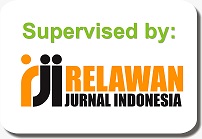Terapi Gestalt: Mengedepankan Hubungan Interpersonal dalam Bimbingan dan Konseling Kelompok
Abstract
The main and most proposed paradigm in Gestalt theory is the integrity of the relationship between the individual and his environment, the good or considered individual who develops according to his development is the individual who understands how his environment is and how he is and what is the binding relationship between the personal self as an individual and his environment. The environment, which is closely related to culture, is the focus of the gestalt approach in explaining the environment for individuals. In this article, the discussion will focus on how interpersonal relationships motivated by culture become the "main weapon" in the implementation of Group Guidance and Counseling with Gestalt therapy techniques. The reason for this is because (1) the relationship between the Counselor and the group members is an intense relationship that lasts a long time; (2) Sharing, caring and Maintenance; (3) Expectations possessed by clients in the implementation of Group Guidance and Counseling
Downloads
References
Brett, K. D., & Michael, W. (2017). Max Wertheimer and gestalt theory. taylorfrancis.com. https://doi.org/10.4324/9780203783573
Clarkson, P., & Cavicchia, S. (2013). Gestalt counselling in action. books.google.com.
Corey, G. (2016). Theory and Practice Counseling dan Psychoteraphy.
Corey, G. (2017). Theory and Practice of Group Counseling (Gerald Corey) (z-lib.org).
Ellis, W. D. (2013). A source book of Gestalt psychology. api.taylorfrancis.com.
Gartmeier, M., Gebhardt, M., & Dotger, B. (2016). How do teachers evaluate their parent communication competence? Latent profiles and relationships to workplace behaviors. Teaching and Teacher Education, 55, 207–216. https://doi.org/10.1016/j.tate.2016.01.009
Hansen, J. C. (1994). Counseling : theory and process (5th ed.). Allyn and Bacon.
Jäkel, F., Singh, M., Wichmann, F. A., & Herzog, M. H. (2016). An overview of quantitative approaches in Gestalt perception. In Vision research. Elsevier.
Koffka, K. (1922). Perception: an introduction to the Gestalt-Theorie. Psychological Bulletin. https://doi.org/10.1037/h0072422
Kohler, W. (2015). The task of Gestalt psychology. books.google.com.
Köhler, W. (1959). Gestalt psychology today. American Psychologist.
McKinley, C. J., Luo, Y., Wright, P. J., & ... (2015). Reexamining LGBT resources on college counseling center websites: An over-time and cross-country analysis. Journal of Applied …. https://doi.org/10.1080/00909882.2014.982681
Mujid, A. (2007). Teori Kepribadian Perspektif Psikologi Islam (Vol. 2).
Nevis, E. C. (2013). Organizational consulting: A Gestalt approach. taylorfrancis.com. https://doi.org/10.4324/9780203727935
Prasetia, A. T., Juliawati, D., & Pratiwi, S. M. (2022). Layanan Penguasaan Konten dengan Pendekatan Mujahadah untuk Mereduksi Kecanduan Smartphone pada Anak. Psychocentrum Review, 4(2), 218–227. https://doi.org/10.26539/pcr.42967
Putri, M. C., Juliawati, D., Khuryati, A., & Yandri, H. (2020). Mereduksi Perilaku Menyontek Siswa di Era “Merdeka Belajar” Melalui Layanan Bimbingan Kelompok. Jurnal Penelitian Bimbingan dan Konseling, 5(2).
Smith, B. (1988). Foundations of Gestalt theory. philpapers.org.
Wertheimer, M., & Riezler, K. (1944). Gestalt theory. Social Research.
Yagi, D. (2008). Current developments in school counseling in Japan. Asian Journal of Counselling, 15.
Yandri, H., Alfaiz, A., & Juliawati, D. (2019). Pengembangan Keterampilan Berpikir Positif melalui Layanan Konseling Kelompok bagi Anggota Ikatan Mahasiswa Pemuda Pelajar Semurup, Kota Padang. Jurnal Pengabdian Pada Masyarakat, 4(4), 509-516.
Copyright (c) 2022 Agung Tri Prasetia, Neviyarni Suhaili, Netrawati

This work is licensed under a Creative Commons Attribution 4.0 International License.








